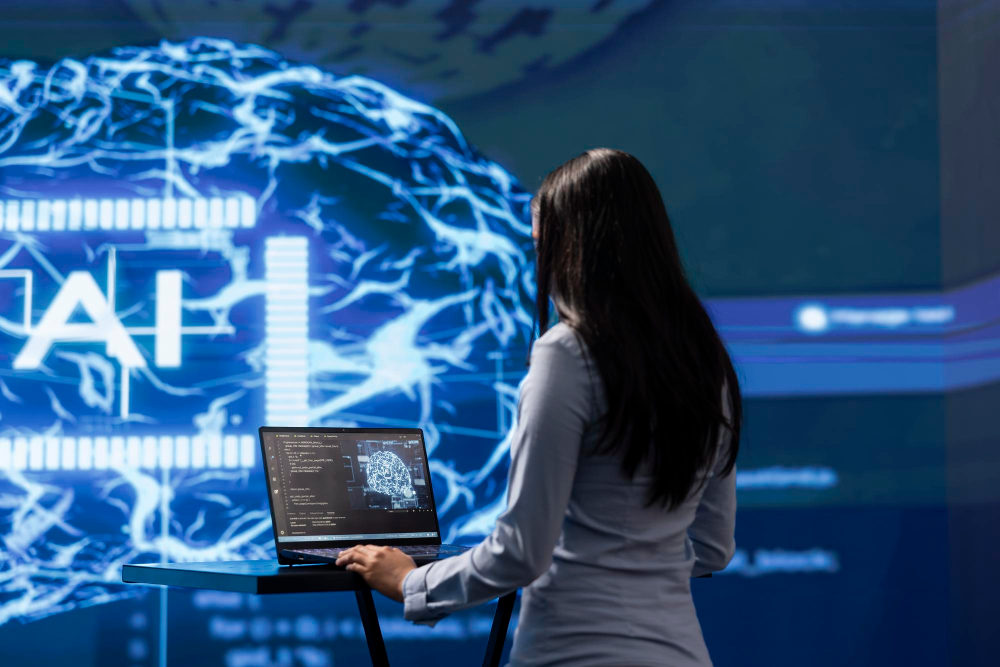In an era where convenience, accessibility, and personalization are reshaping patient experiences, voice recognition and Natural Language Processing (NLP) are revolutionizing how we interact with healthcare apps. Whether you're a developer building the next breakthrough solution, a provider striving for efficiency, or a tech-savvy patient seeking better engagement—voice-enabled features are no longer futuristic. They're happening now.
Voice technology and NLP are becoming core components of Healthcare App Development, enabling hands-free workflows, smart assistants, and even emotional insights—all from a mobile device. From simplifying documentation to supporting multilingual care delivery, these tools are changing how we build and use Healthcare Mobile Applications.
How Voice and NLP Are Empowering Healthcare Apps Today
Voice and NLP technologies interpret spoken language, convert it to structured data, and analyze its meaning to deliver useful actions or insights. In healthcare, this capability is a game-changer, especially in:
- Hands-free charting and documentation
- Voice-activated patient instructions and reminders
- Conversational symptom checkers
- Multilingual communication tools
- Real-time transcription for virtual visits
This isn’t just about user convenience. It’s about reducing clinician burnout, improving access for patients with disabilities or language barriers, and turning mobile devices into intelligent care companions.
Three Innovative Use Cases in Voice-Enabled Healthcare
1. Virtual Assistants for Patient Triage and Symptom Tracking
Imagine a voice-powered assistant embedded in a chronic care app. A patient with asthma wakes up feeling short of breath and instead of typing symptoms into a form, they say:
"Hey HealthBot, I’m wheezing again, and my chest feels tight.”
The NLP system recognizes keywords, measures urgency, and either logs the data or escalates the case to a provider. Over time, it identifies trends and flags abnormal episodes.
Why it matters:
- Reduces friction in daily symptom tracking
- Empowers patients to take early action
- Frees up clinical staff by filtering low-priority cases
2. Real-Time Transcription for Telehealth and Home Visits
For providers conducting virtual consultations or in-home visits, typing notes mid-session can be distracting and inefficient. Voice-enabled apps can transcribe the session in real time, using NLP to extract structured clinical insights like medication changes, diagnoses, and action items.
Why it matters:
- Saves clinicians hours of post-visit documentation
- Improves accuracy and reduces errors
- Enhances continuity of care across teams
3. Sentiment Analysis for Mental Health Care
Voice doesn’t just convey words—it carries emotion. NLP-powered healthcare apps can analyze tone, pace, and word choice to detect distress, anxiety, or depression. When integrated into Mental Health Care platforms, these insights help therapists track progress or alert them to a crisis.
A mental health app might prompt:
"You sound a bit low today. Would you like to journal or speak to someone?"
Why it matters:
- Adds emotional intelligence to digital health tools
- Supports early intervention for at-risk users
- Enhances personalized care plans
Real-World Scenario: A Better Day for Both Patient and Provider
Let’s say Dr. Patel, a primary care physician, uses a voice-enabled mobile EHR app during home visits. She speaks her notes aloud:
"Patient has reported three migraines this week, moderate severity. Prescribing low-dose beta-blockers."
The app instantly transcribes, categorizes, and stores the data in the correct EHR fields. Meanwhile, her patient, Maria, uses a companion app to log her symptoms each morning by saying,
"My pain level today is a six, and I feel slightly nauseous."
Maria receives a medication reminder and a suggestion to try a guided breathing exercise—both delivered in her preferred language. Dr. Patel receives a weekly report showing Maria’s progress, without a single manual input.
This is Healthcare App Development done right: accessible, intelligent, and efficient.
Challenges Developers Must Navigate
As promising as voice and NLP are, there are hurdles:
1. Accuracy and Clinical Context
Medical terminology, accents, background noise, and emotional tone can challenge NLP engines. Developers must train models with domain-specific datasets and continuously refine them using real-world input.
2. Privacy and HIPAA Compliance
Voice data is sensitive health data. Developers must ensure:
- Encrypted voice capture and storage
- On-device processing where possible
- Clear consent workflows
- Full HIPAA compliance throughout the app stack
3. System Integration and Interoperability
Voice-captured data must sync cleanly with EHRs, care coordination tools, and provider dashboards. Using FHIR and SMART on FHIR standards can help ensure that voice-enabled apps connect meaningfully within the healthcare ecosystem.
The Future Is Speaking Up
As voice technology and NLP continue to mature, we can expect even more dynamic applications:
- Real-time language translation for global telehealth
- AI-powered coaching for medication adherence
- Voice biometrics for patient authentication
For patients, it means more human, frictionless care. For providers, it means less burnout and better data. For developers, it's an opportunity to innovate at the intersection of healthcare and human language.
Conclusion: Let’s Talk About What’s Next
Voice and NLP are transforming Healthcare Mobile Applications from static tools into conversational allies. Whether you’re building apps for primary care, mental health, or chronic disease management, now is the time to think voice-first.
Have you experienced or developed a voice-enabled healthcare app? We’d love to hear about it. Share your insights—or explore how we can help bring your next voice-powered idea to life.





Comments